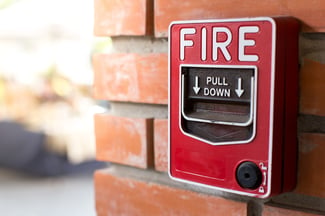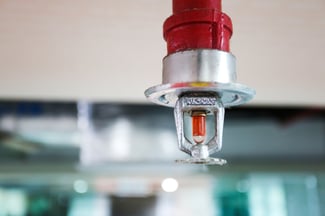
Today, items like fire extinguishers and smoke alarms are just a given for most people when they think about fire protection and life safety. In fact, considerations around fire safety go back to the Roman Empire, when Emperor Nero required that Rome institute passive fire protection methods after a deadly fire ravaged the city.
However, modern fire safety regulations as we think of them today are fairly recent, and in America date back to the early 1900s.
In this blog, we’re taking it back to the earliest days of fire safety regulation in America and comparing it to how far we’ve come today.
Fire Safety from 1600-1899
-1.png?width=325&height=216&name=Untitled%20design%20(5)-1.png) In the earliest days of America, fires were a big concern, with catastrophic fires in Chicago, Peshtigo and other major metropolitan areas.
In the earliest days of America, fires were a big concern, with catastrophic fires in Chicago, Peshtigo and other major metropolitan areas.
In 1631, the first fire safety laws and building codes were issued in Boston, prohibiting the construction of wooden chimneys and thatched roofs in order to mitigate fire risks. In 1648 in New Amsterdam (today New York City), the first fire wardens were appointed. And in 1736 in Philadelphia, the first volunteer fire department was created.
In 1872, the Great Boston Fire finally led to new fire safety and building codes related to fire and life safety. This fire destroyed 65 acres of Boston’s downtown – including 776 buildings – and killed at least 30 people, along with causing the equivalent of about $1.5 billion in damages. This was one of the costliest fires in American history.
The Triangle Shirtwaist Factory Fire
On March 25, 1911, a fire at the Triangle Shirtwaist Factory in New York City brought fire safety regulations into the public eye in an even more somber way. This fire was one of the deadliest industrial fires to ever occur in the history of New York City, causing the death of 146 workers. So many people died because managers had locked the doors out of the factory to prevent workers taking breaks that weren’t authorized – a common but highly dangerous practice at the time.
After this fire, the Factory Investigating Committee was born, created by the New York State Legislature. The purpose of this committee was to review industrial sites for fire safety and other health risks, and their work helped modernize labor laws and mandate better fire safety measures. These included things such as building access mandates, fireproofing measures, the installation of alarm systems and sprinkler systems, and more.
Early Fire & Life Safety Interventions
The earliest interventions in fire and life safety were primarily around putting out fires that started via water pipes or early sprinkler systems, as well as building codes such as prohibiting combustible materials when constructing new structures.
The National Fire Protection Association (NFPA) is a global nonprofit that was founded in 1896, with the purpose of “eliminating death, injury, property and economic loss due to fire, electrical and related hazards.” This organization today creates the gold standard of guidelines and protocols when it comes to fire and life safety.
Fire Safety Regulation Today
Today, fire safety is something many of us don’t even have to think about, because it’s so inherent to buildings and homes. All homes and buildings have smoke detectors, for example, and most children know that if their clothing catches fire they should “stop, drop and roll.” Fire extinguishers are commonplace in office buildings as well as factories or other workplaces, and many people even have fire extinguishers at home.
Cities, states and organizations like the NFPA all have requirements for fire and life safety prevention and protection measures. All major cities and towns have fire departments, so if a fire does break out, people know it will be put out as quickly as possible by trained professionals.
Fire safety regulations thankfully have come a long way over the centuries. However, we know it can still be overwhelming – and we at CertaSite are here to help. Whether it’s a check to make sure your system is in compliance, or a full upgrade to make sure you’re as protected as possible, we would love to work with you. Reach out to us today at CertaSitePro.com.


-2.png?width=274&height=326&name=Untitled%20design%20(4)-2.png)



